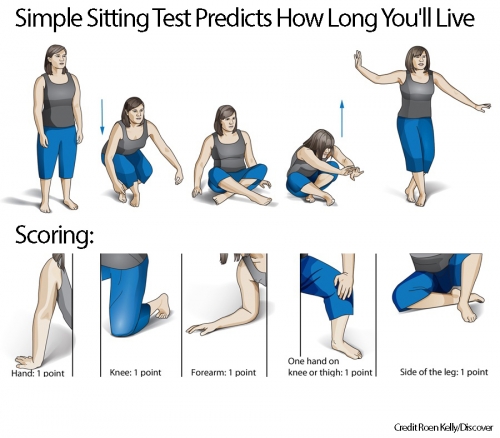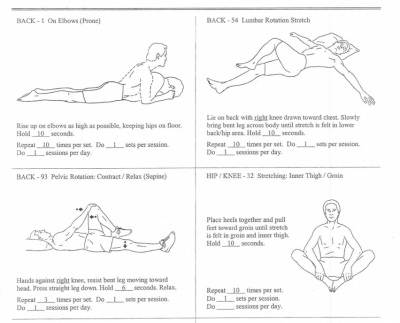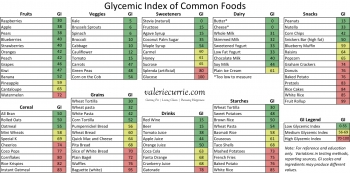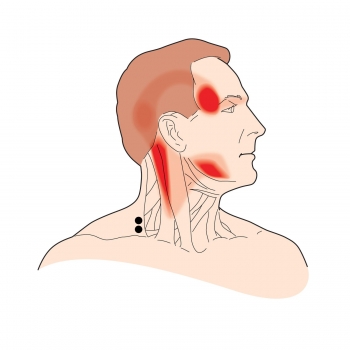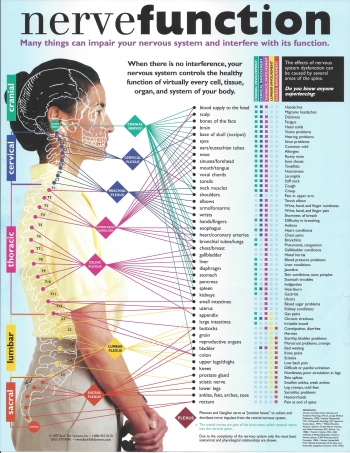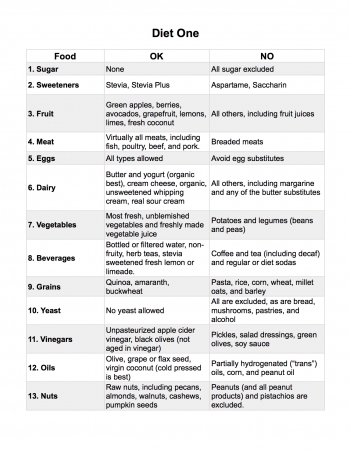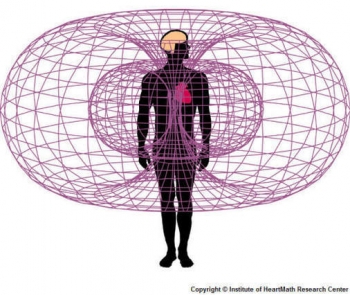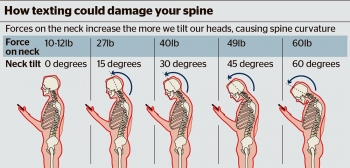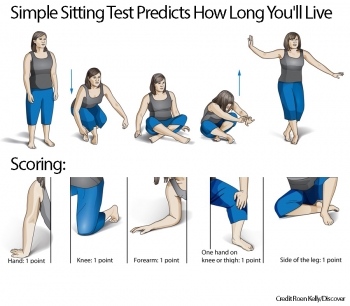Araujo wanted to do more than just lecture his patients about the importance of staying fit. He wanted to give them concrete information about where they had room to improve. He believed that existing clinical tests assessing flexibility, balance and muscle strength were too impractical or time-consuming, requiring ample space for walking or specific equipment such as a stopwatch or a particular type of adjustable chair.
And because factors such as the height of the arms on a chair or a clinician’s speed with a stopwatch can vary, the results could also be unreliable. So he and colleagues developed an alternative, which they call the sitting-rising test, or SRT. It requires no equipment or walking paths — just a clear patch of floor and a willing participant.
In a study published in the European Journal of Cardiology, Araujo had more than 2,000 patients ages 51 to 80, all part of an exercise program at Clinimex Exercise Medicine Clinic in Rio de Janeiro, take the SRT. People who scored fewer than eight points on the test, he found, were twice as likely to die within the next six years compared with those who scored higher; those who scored three or fewer points were more than five times as likely to die within the same period compared with those who scored more than eight points.
Overall, each point increase in the SRT score was associated with a 21 percent decrease in mortality from all causes. Araujo hopes such information can help get more older people walking through the doors of a gym rather than rolling into an emergency room.
Try It
- Stand in comfortable clothes in your bare feet, with clear space around you.
- Without leaning on anything, lower yourself to a sitting position on the floor.
- Now stand back up, trying not to use your hands, knees, forearms or sides of your legs.
Scoring
The two basic movements in the sitting-rising test — lowering to the floor and standing back up — are each scored on a 1-to-5 scale, with one point subtracted each time a hand or knee is used for support and 0.5 points subtracted for loss of balance; this yields a single 10-point scale.

